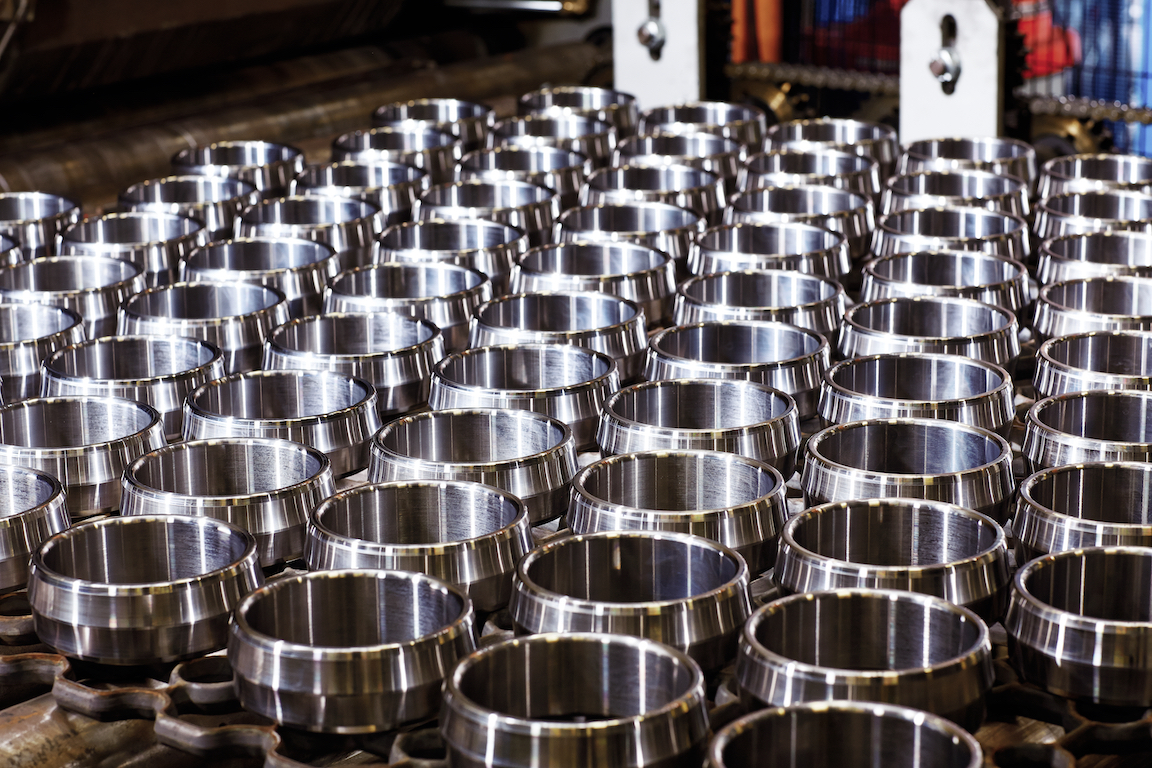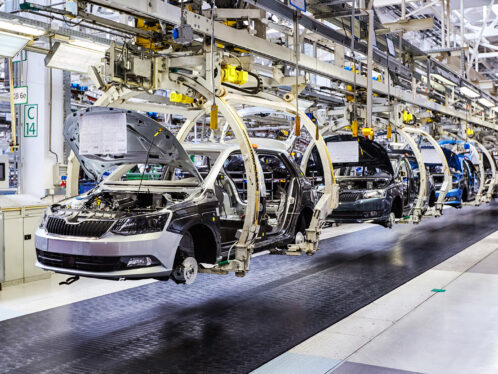
Powerful architecture in Prague
Housed in a 1914 architectural classic, Štvanice Hydroelectric Power Plant blends history with high technology.
Summary
Toroidal bearing technology When Czech power company CEZ a.s. upgraded the historical Stvanice hydro power station, it opted for the latest in bearing technology. The CARBTM toroidal roller bearing combines the advantages of cylindrical, spherical and needle roller bearings but has none of their disadvantages. The incorporation of a CARB bearing means reduced maintenance and increased performance.
In a conventional bearing, the load is sometimes unevenly distributed along the length of the rollers. For example, when the bearing is misaligned, the edge stress on the rollers is heightened. Thus, as the degree of misalignment increases, the life span of the bearing decreases.
As a result of the innovative design of the CARB toroidal roller bearing, the rollers always find a position at which the applied load is at a minimum.
When a CARB bearing is misaligned, the inner ring becomes tilted with respect to the outer ring and the rollers slide away to take up a position in which the load is evenly distributed along their length.
When a CARB bearing is displaced axially, the outer ring and inner ring shift in relation to each other. The rollers move by a distance equal to one-half of the axial displacement. This is the position in which the load on the rollers is at a minimum and is evenly distributed.
Housed in a 1914 architectural classic, Štvanice Hydroelectric Power Plant blends history with high technology.
Situated on the western tip of Štvanice Island, in the Vltava River, the Art Nouveau-style Štvanice Hydroelectric Power Plant quietly goes about the business of providing power to the city of Prague. It is a little-noticed but impressive architectural gem set in impressive surroundings. The front gate of the plant affords a magnificent westward view of several of the bridges spanning the Vltava, along with the ornate Prague Castle and the mini-Eiffel Tower atop Petrin Hill.
The power plant was completed in 1914, when Prague and the Czech lands still belonged to the Habsburg Empire, but it was decommissioned in 1972 when its equipment began to wear out. The authorities at that time preferred to construct new large-scale energy plants rather than invest in the upkeep of older plants.
But eventually the state power utility had a change of heart about hydroelectric power. Between 1984 and 1987 they completely renovated the plant. The renovation was particularly difficult because the architects on the project wanted to preserve the original turn-of-the-century Art Nouveau exterior of the building, as well as the period stone trimmings on the site. To do this they had to find and excavate the original intake and discharge equipment – a difficult job because as part of the closure for the water intake had been filled with concrete.
Today, the Štvanice plant comes under the aegis of the Czech Energy Utility’s Hydroelectric Power Plants Division. Due to the complicated and half-completed privatisation process at work in the Czech Republic, the plant, while owned by the state energy provider CES, is operated and maintained by a private arm of CES – CES, a.s.
But complications have arisen over Štvanice Island’s ownership and operation. The Czech state still owns 67 percent of the utility, which enjoys a monopoly status as a power producer. This state of affairs is constantly being debated, as the Czech Republic goes through a period of political turnover.
Clean hydro power
CES produces most of its power from coal-fired power plants and is presently constructing a nuclear power plant at Temelin, in southern Bohemia. Since 1989, CES has done much to improve the coal-dust filtration process in its coal plants. But gradually stricter environmental regulations, prompted by the country’s application to join the European Union, mean the yardstick is always changing. The production of hydropower, such as that garnered from Štvanice and 12 sister CES, a.s.-run hydro plants, provides a small but important investment in clean energy production.
The Štvanice plant’s maximum power production is 5.7 megawatts, produced by three turbines set three metres underground, each with an output of 1.9 megawatts. Each turbine handles a flow capacity of 56 cubic metres per second. The turbines are connected to 53 pole synchronous generators, at 107.1 revolutions per minute. The average difference in surface levels between the intake and outflow, or head, is 3.96 metres.
The plant is conveniently situated below a series of dams, so the energy output remains predictable and constant. The power produced by the Štvanice plant is purchased by the regional distributor, Prague Energetics (Prazky Energetika). The power from the 6.3-kilovolt synchronous generators is transformed to 22 kilovolts and transmitted to the main city network. The plant is fully automated, requiring the efforts of only two workers along with occasional visits by a CES supervisor. Remote monitoring takes place from a dispatch centre on the Vltava south of Prague. Štvanice’s yearly output of 19,000 megawatt hours is roughly equivalent to the amount required to operate Prague’s street lights.
Solved vibration problem
The renovated Štvanice plant houses three hydroelectric units, complete with Kaplan-type pit turbines. The main technological upkeep issues at Štvanice relate to the turbine axial loading. Since the reopening of the power plant in 1987, the turbines have been often out of commission for months at a time. This has been due to fatigue on the fixing bolts that hold the runner bearings – and especially the centre bearing – in place. Constant torque and stress on the bolts produced repeated cracking. The stress was created by the flexible compression of the eight-metre-long shaft, which in turn was caused by the pressure of the water driven against the rotor blades. This meant lessened capacity, noise problems and repeated replacement of the turbines’ bearing system.
The previous system employed a roller bearing with a sliding outer ring, which caused friction between the bearing body and the outer ring. That system was calculated to last 20 years, but in practice the bearings needed to be replaced every year or two.
The axial load problem offered a number of traditional solutions. The cheapest was to reconstruct the turbine using a rubber bearing with water lubricant. Instead, in October 1997, CES, a.s. officials opted to try the SKF CARBTM solution in one of the turbines – the first-ever implementation of that technology in a hydroelectric plant.
When the water levels on the Vltava are lower than normal, the plant runs on only one turbine – the one with the CARB bearing. “Our experience with it is short,” says Josef Pilik, maintenance manager of the plant, “but I am confident it will improve the functioning and lifetime of the turbines.” When water levels rise and Štvanice’s other two turbines are put into operation, Pilik expects eventually to install another CARB bearing. But even now, in the depths of a restored Art Nouveau power plant, the latest in bearing technology is hard at work.
Mark Huntley
a journalist based in Prague
photos Arne Valen




